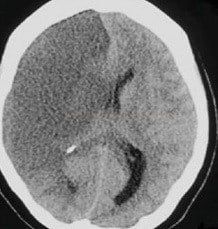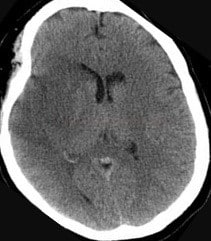ISCHEMIC STROKE / CLASSIFICATION
Bamford/Oxford classification of ischemic stroke
Updated on 26/10/2023, published on 11/05/2023
- the Bamford classification (also known as the Oxford classification) categorizes ischemic stroke based on the initial presenting symptoms and clinical signs. This system is based on clinical findings alone and does not require imaging to classify the stroke
- TOAST classification, which takes into account the etiology, is much more helpful (knowing the mechanism of stroke is essential for proper management)
Total anterior circulation infarct (TACI)
A large cortical stroke affecting the areas of the brain supplied by both the middle and anterior cerebral arteries
All three of the following need to be present:
- unilateral weakness (and/or sensory deficit) of the face, arm, and leg
- homonymous hemianopia
- higher cerebral dysfunction (dysphasia, visuospatial disorder)
Partial anterior circulation infarct (PACI)
A less severe form of TACS, in which only part of the anterior circulation has been compromised
Two of the following need to be present:
- unilateral weakness (and/or sensory deficit) of the face, arm, and leg
- homonymous hemianopia
- higher cerebral dysfunction (dysphasia, visuospatial disorder)
- isolated higher cerebral dysfunction is also classified as PACI
Posterior circulation infarct (POCI)
Damage to the area of the brain supplied by the posterior circulation (e.g., cerebellum and brainstem)
One of the following needs to be present:
- cranial nerve palsy and a contralateral motor/sensory deficit
- bilateral motor/sensory deficit
- conjugate eye movement disorder (e.g., horizontal gaze palsy)
- cerebellar dysfunction (e.g., vertigo, nystagmus, ataxia)
- isolated homonymous hemianopia
Lacunar infarct (LACI)
A subcortical stroke that occurs secondary to small vessel disease. There is no loss of higher cerebral functions (e.g., dysphasia)
One of the following needs to be present:
- pure sensory stroke
- pure motor stroke
- sensorimotor stroke
- ataxic hemiparesis





